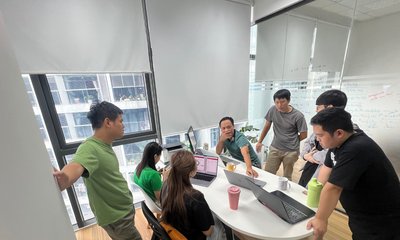Unlocking Easy Python App Distribution: Essential Tools and Tips for Developers & SME Owners in 2025
By hientd, at: Nov. 9, 2025, 2:49 p.m.
Estimated Reading Time: __READING_TIME__ minutes


Introduction
Are you tired of "dependency hell"?
complicated build steps, and deployment headaches when launching your Python applications?
For too long, the brilliant simplicity of Python code has been overshadowed by the complexity of sharing it.
But that era is over. In 2025, a powerful new generation of tools is making Python app distribution faster, more secure, and unbelievably easy. If you're a Python developer or a small business owner aiming to simplify your deployment pipeline, this guide will show you how to leverage these game-changers to save time and reduce frustration.
Why Python is Essential for Modern Businesses
Python remains the backbone of innovation for startups and SMEs (Small and Medium-sized Enterprises) worldwide. It powers everything from internal analytics dashboards to customer-facing AI solutions and complex web backends.
Its large ecosystem, rapid development speed, and ease of use mean companies can build powerful applications quickly. The challenge, however, has always been the last mile: distribution.
Key Pain Points in Python App Distribution
Developers and business owners consistently struggle with these issues:
-
Complicated Packaging Routines: Transforming a working Python script into a stable, runnable package often requires frustrating, custom configurations.
-
Dependency Hell: Dealing with conflicting package versions or environments that work locally but break in production.
-
Security Concerns: Managing secrets, licenses, and ensuring code shared via public repositories is secure and authenticated.
-
Platform Compatibility: Building a single executable that works reliably across Windows, macOS, and Linux without needing a specific Python interpreter installed.
Game-Changing Tools for 2025
The following tools have streamlined the distribution process, offering elegant solutions to historic Python packaging issues:
1. PyApp: The Single-File Solution
PyApp packages your Python program and its entire isolated environment into a single, compact executable file. This means the end-user doesn't need to install Python or worry about dependencies as it just runs. It’s perfect for effortlessly sharing internal tools, utilities, and lightweight desktop applications.
2. uv by Astral: The Blazing Fast Dependency Manager
uv by Astral is a high-performance replacement for traditional tools like pip and venv. Built in Rust, it manages environments, resolves dependencies, and installs packages with unprecedented speed. For teams seeking frictionless, reproducible app deployment, uv dramatically shortens setup and build times.
3. Kiro IDE: AI-Powered Productivity
Kiro IDE leverages cutting-edge AI to automate traditionally manual tasks. It can rapidly generate boilerplate code, write comprehensive documentation, and even create unit test cases, allowing developers to focus purely on core business logic rather than auxiliary tasks.
Best Practices for SMEs Deploying Python
Implementing these practices will ensure your team maximizes the benefits of Python's modern ecosystem:
-
Adopt Modern Packaging: Integrate tools like PyApp or dedicated bundling solutions (e.g., Nuitka) to create reliable, distribution-ready artifacts for shorter deployment cycles.
-
Secure Your Repositories: Always enable two-factor authentication (2FA) on developer accounts and utilize repository features like API token scoping when interacting with platforms like PyPI or internal package indexes.
-
Mandate Virtual Environments: Strictly utilize tools like
uvor standardvenvto keep every project isolated. This is the simplest way to prevent dependency clashes and ensure portability.
-
Leverage Cloud IDEs: Use collaborative, cloud-based development environments to standardize development settings and onboard remote team members instantly, improving code consistency.
Your Deployment Action Plan
Ready to simplify your Python workflow? Take these three immediate steps:
-
Assess and Identify: Review your current deployment process. Where are your biggest time sinks: dependency resolution, cross-platform testing, or initial setup?
-
Experiment with Speed: Try managing a simple project's dependencies with uv to experience the speed increase firsthand.
-
Secure the Supply Chain: Review all accounts and repositories associated with your code for 2FA compliance and secure token usage.
Conclusion
With the maturity of tools like PyApp and uv, the struggle with Python app distribution is officially obsolete. Developers and SMEs now have the power to spend less time debugging deployment issues and more time building innovative, growth-enabling solutions. Embrace these innovations to secure your workflow, maximize team productivity, and deploy your next application with confidence.
Frequently Asked Questions
Q: How can SMEs benefit most from modern Python tools?
A: The primary benefits are quicker app launches, a sharp reduction in post-deployment support issues, and more engineering time freed up for core business growth initiatives.
Q: Are these tools beginner-friendly?
A: Yes. Tools like uv and PyApp are specifically designed to abstract away complexity, offering simple commands for basic tasks while still providing deep customization for expert users.
Q: Where do I learn more about these specific tools?
A: Start by checking out the official documentation and community guides for PyApp, uv, and Kiro IDE. Additionally, active developer forums are excellent resources for practical deployment advice and troubleshooting.





